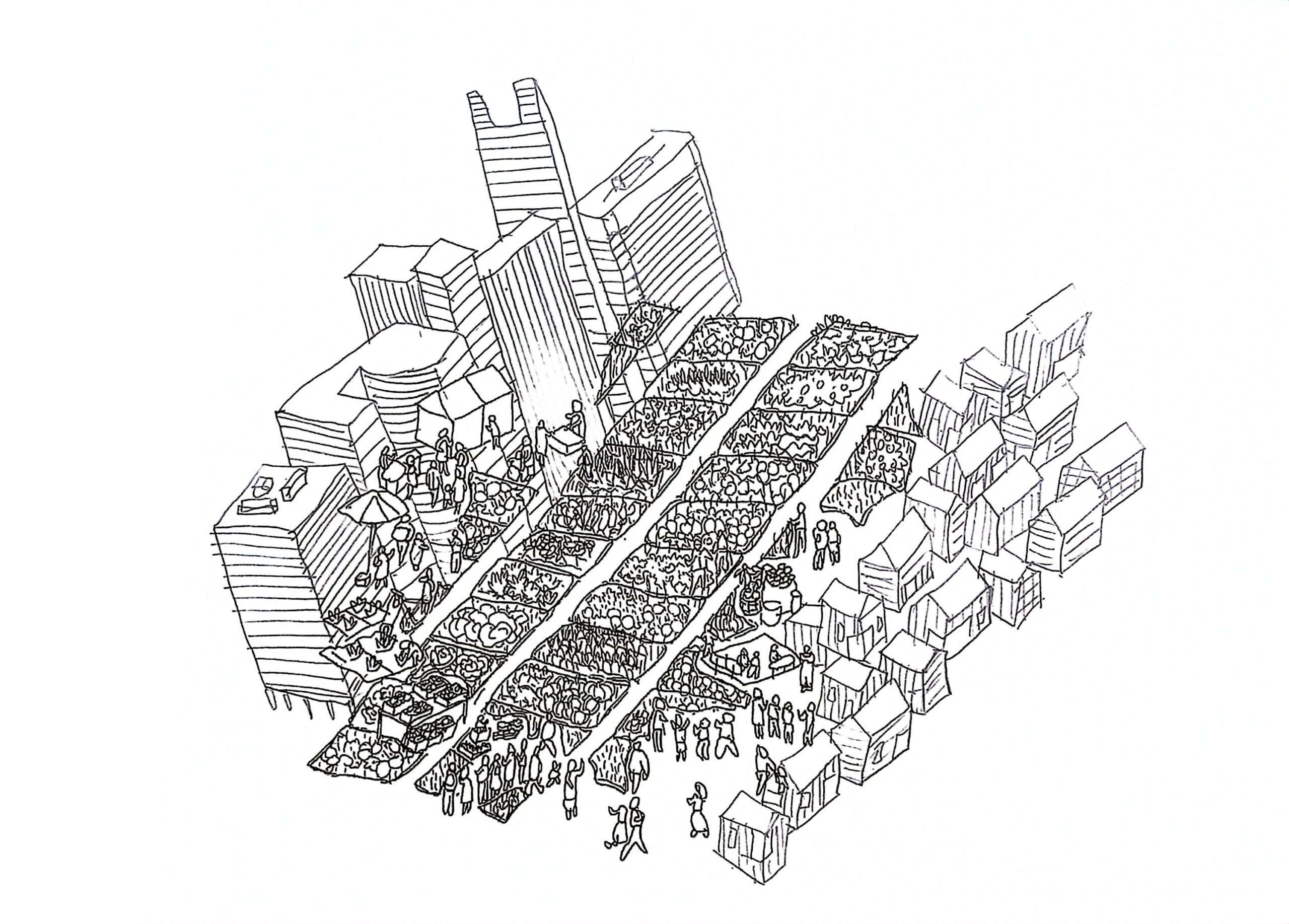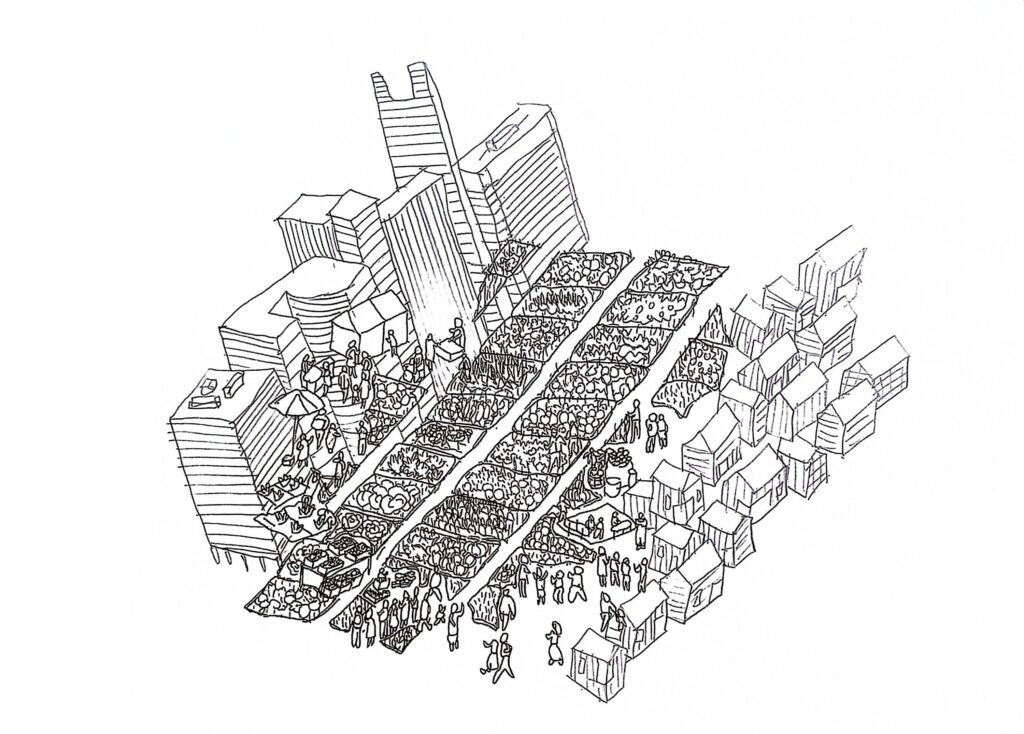
Community gardens act as a social glue in urban spaces, connecting people from different backgrounds to help build physical and mental well-being. By partnering with local organizations and schools, they help the next generation understand the value of these green spaces and why they should be taken care of. Despite their significance, gardens are often forgotten when designing urban spaces, policies against them and lack of participatory planning make them a burden on the people who needed them the most.
The Social Glue Has Come Undone
The National Center for Environmental Health, or NCEH, defines community gardens as “collaborative projects on shared open spaces where participants share in the maintenance and products of the garden, including healthful and affordable fresh fruits and vegetables”1. Jennifer, when discussing problems of food insecurity in Durham County, North Carolina, says that the people in Durham County wanted more access to food, and one problem was public transportation2. The lack of walkable and accessible public transportation made healthy food access a barrier. Evidence shows that good bus transportation ensures more food and increases health. The people ask for a “human-scaled design”. Eric Klinenberg’s book “Palaces for the People” shows social infrastructure as this human-scale design3. He writes that he has seen how divided the world is, news, and the internet from what was supposed to be a place free from judgment – due to the privacy it offers, is now fuel for more division. Eric says “Today, societies worldwide are becoming more fragmented, divided, and conflicted. The social glue has come undone”.
When designing a place, the user and the functionality must be thought out, to help who needs it the most, and increase social interactions. One solution is the implementation of third place into our life routine. The first place is the most intimate, like the house, the second place is a place for menial interaction, like the job place, while the third palace is a palace of social interaction and public well-being. The NCEH uses the words “collaborative projects” and “shared open spaces”, these community gardens are not meant to be a burden on individuals but to be part of a collective and help the people who need them the most. If we make community gardens, a third place in our life, a place where we take our children and teach them about the joy of planting, then we will make them a social glue in cities.
Androulaki when discussing an Athletic Park in Aberia, Chania, shows the importance of the creation of a third place and the participation of the community members4. The Mayor of Chania organized a meeting with the local groups of the neighbors and other local authorities, where the citizens asked the local authorities for the full implementation of the park and specifically asked, that it have open gathering spaces, athletic infrastructures, lighting, and greenery. This park was not only for the community, but the publicity given to the park and the welcome of the city’s citizens transformed this local park into a wider city range park. This park is now a glue that unites the local people with the city, making it more than just a green park, but a center for ideas and health habits.
Community gardens help the community, which in turn can help the city. We need to learn what makes a good community garden, one that helps and nurtures a sense of belonging. We also need to understand the problems that community gardens around the world face, which challenge them and even make caring for them a burden to the people who need it most.
Passing Information to The Next Generation
Twiss in Healthy Cities and Communities in California, says that a successful community garden needs to focus on expanding supportive policies, increasing funding, and hiring staffing5. Supportive policies are to try to solve the water access problem that many community gardens face as they are starting. Land use is very important, as expressed in what happened to PHX Community Garden in Phoenix, Arizona. PHX Community Garden is a struggling community garden, mainly run by low-income minorities, where the community members have an interest in gardening but is becoming more of a burden6. PHX received a notice to vacate the land, but even though supporters including Mayor Greg Stanton and Sen. John McCain were trying to persuade the federal government to let them stay, it was bought because they were going to build a school, to this day it is a vacant lot.

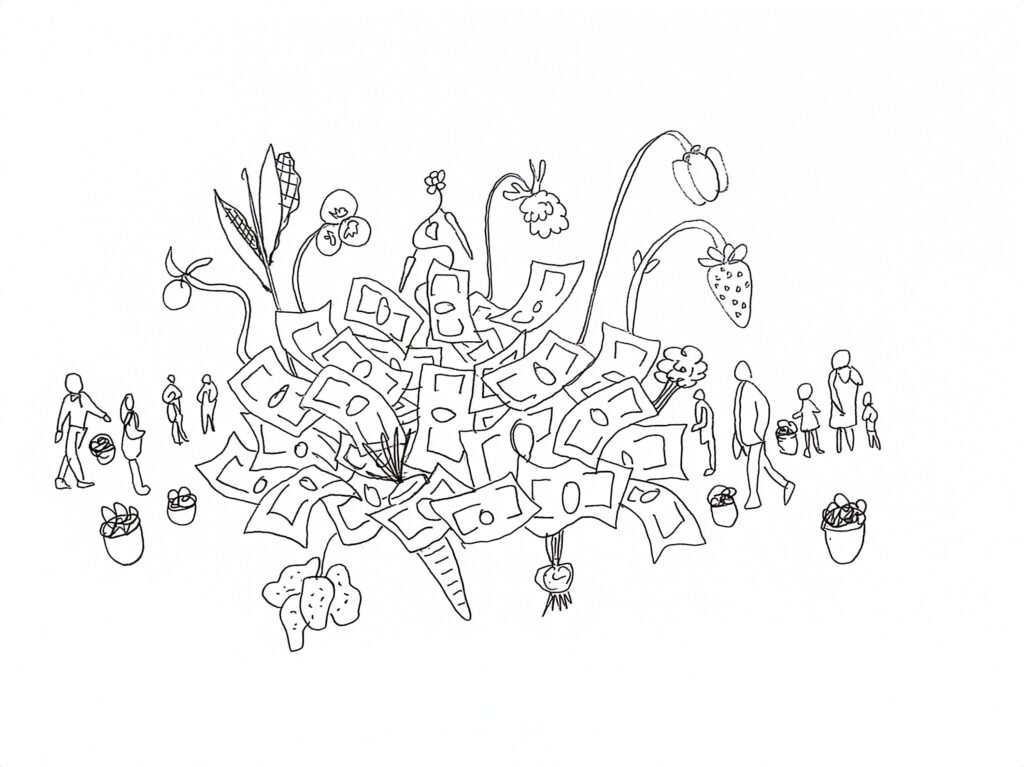
Community gardens need not only good staffing and policies but most importantly, to make a social glue, they need to be guided using local leadership, volunteers, partner organizations, and school interactions. Redd, writes about a new small garden in San Antonio, Texas, called Heavenly Garden, which is changing the view of the community gardens, and how big their importance is7. Carrying decades of growing knowledge, Papa Prevo turned the undeveloped patch at Redeeming Grace Church into a church-community organic oasis that annually produces thousands of pounds of over 50 varieties of vegetables, herbs and fruits such as broccoli, kale, Chinese lettuce, green onions, beets, collards, celery, mustard, banana, cayenne, serrano peppers and jalapeno peppers and loose-leaf lettuce. In the community, some of the food is donated, but much of it is sold to the public at discounted prices. What was most important was that the garden was a space to “pass on [. . .] information to the next generation,” said the elder green thumb. “Kids get excited especially when they get involved [in gardening] and they see where this food comes from other than the market,” explained Papa Prevo in a video about his work.
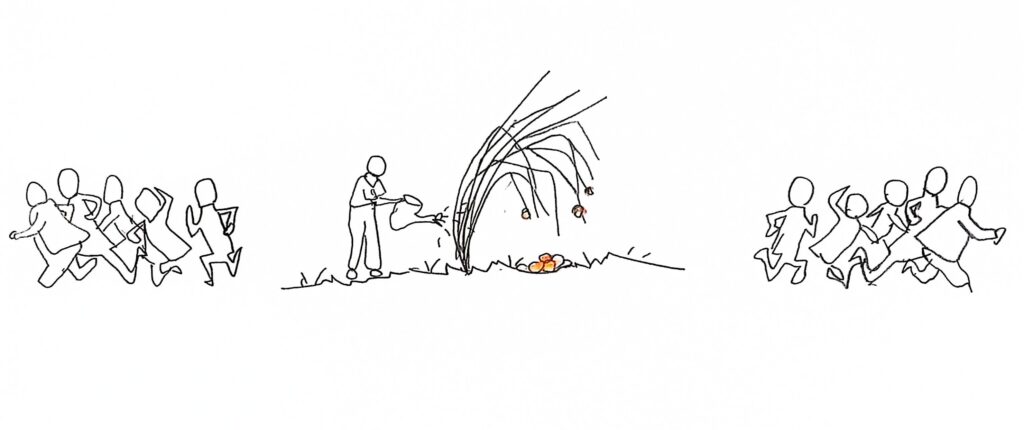
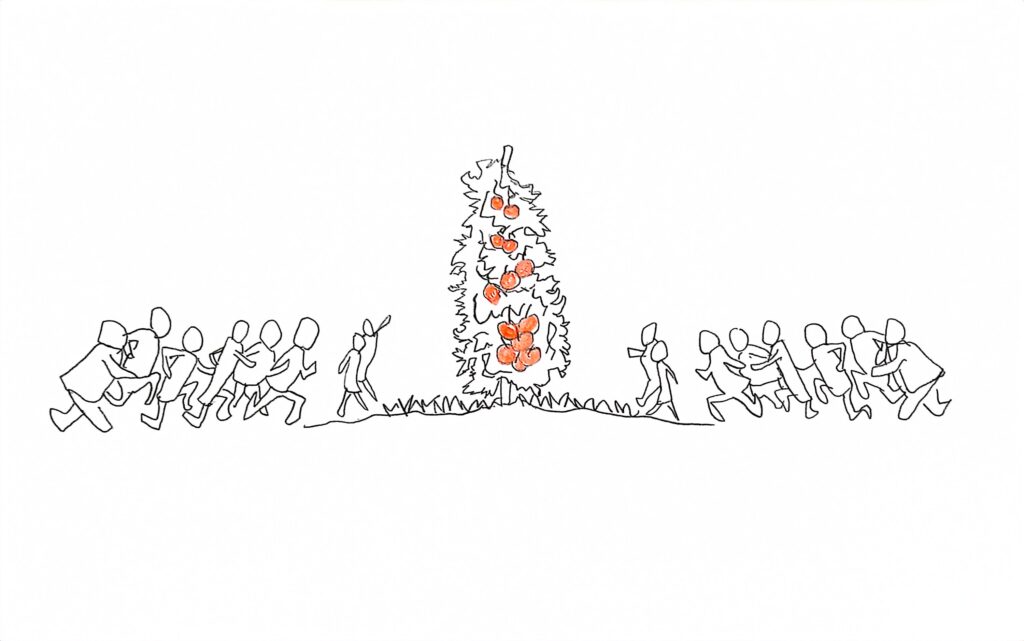
We can also see how bad it gets when nothing is working, where participatory planting, money insecurity, and a sense of not belonging overtake a community garden. ¡Esta es Una Plaza! is a community garden in Madrid, Spain, where viewers from the outside may look at as an idealistic view of a utopian community in the city full of like-minded people, working together for the common good of all and transforming the city in the process, is not without its problems8. The creation of a cactus garden in a place where it shouldn’t be, overtaking other people’s plots, repairing a broken wall with cement instead of natural materials, and most importantly doing all of this without setting up an assembly meeting, are all little things that made the general mood of the collective pessimistic.
People had had enough. Two members of the community garden have already said that they were thinking of leaving and not coming back. They saw it as the only option. The social glue that once held it together was coming apart.
Encourage Social Interactions
To fix this social glue, prescriptions or strategies must be created to solve these problems9. A guideline to create a successful community garden, based on what has been proven to work, and what has not worked, that should be fixed. When thinking about the design of the community garden, just like ¡Esta es Una Plaza! Community Garden was doing, spaces for conversation should be created that encourage social interactions. From PHX Community Garden we learn how important it is to encourage residents from diverse backgrounds to participate. Participatory Process is very important, and organizing workshops, classes, and gardening events will encourage skill-sharing, such as Heavenly Garden shows, community gatherings, and volunteer days strengthen the community. Education is an important strategy, where collaboration with local schools is added to the garden into educational programs. Partnering with businesses, organizations, and community leaders to support the garden and its initiatives and seek grant funding and donations to support the garden’s maintenance and expansion. In Heavenly Gardens, local black ranchers donate horse manure for fertilizer while the city donates wood chips, this is what makes a community garden, not just a produce garden, but a place that connects it to the city.
Community gardens are more than just a place to grow vegetables and fruits, they are vital social infrastructure elements that when designing a city block, should be implemented. They are third places, that bring joy to an otherwise routine life, where social interactions can happen, where kids learn where the food they eat comes from, and where schools can teach about mental well-being true the use of planting. Community gardens are the social glue of the city, but are a very fragile glue, that if not taken care of can hurt the people who need it the most, even making it a burden, if done correctly, it can make people eat healthy, teach the next generation about healthy food habits and connect the community to speak and work together.
References:
1. Kirsch, K.R., McDonald, T.J., Newman, G.D. (2022). Surveys of community garden affiliates and soils in Houston, Texas. Environ Monit Assess 194, 330
2. Cadvender, J., (2023). Connecting Communities And Nourishing Lives: Enhancing Food Security Through Improved Public Transportation In Durham County. North Carolina.
3. Klinenberg, E. (2019). Palaces for the People: How Social Infrastructure Can Help Fight Inequality, Polarization, and the Decline of Civic Life. Broadway Books.
4. Androulaki, M., Optimization of public spaces through network potentials of communities. National Technical University in Athens, 2019.
5. Twiss, Joan, Joy Dickinson, Shirley Duma, Tanya Kleinman, Heather Paulsen, and Liz Rilveria. Community gardens: Lessons learned from California healthy cities and communities. American Journal of Public Health 93, no. 9 (2003): 1435-1438.
6. Bleasdale, Tommy, Carolyn Crouch, and Sharon L. Harlan. Community gardening in disadvantaged neighborhoods in Phoenix, Arizona: Aligning programs with perceptions. Journal of Agriculture, Food Systems, and Community Development 1, no. 3 (2011): 99-114.
7. Reed, Duane. Military veteran Clarence Prevo turns overrun backyard into Heavenly Gardens, an urban paradise in San Antonio. Ark Republic: Telling Stories, Changing the Conversation, 2024.
8. Gundy, Olivia. Conflict in The Community Garden. Shared Earth Living: Co-creating a More Beautiful World, 2022.
9. Jill S. Litt, Mah-J. Soobader, Mark S. Turbin, James W. Hale, Michael Buchenau, and Julie A. Marshall. The Influence of Social Involvement, Neighborhood Aesthetics, and Community Garden Participation on Fruit and Vegetable Consumption. American Journal of Public Health 101 (2011): 1466-1473.
Houston, February 19, 2025

